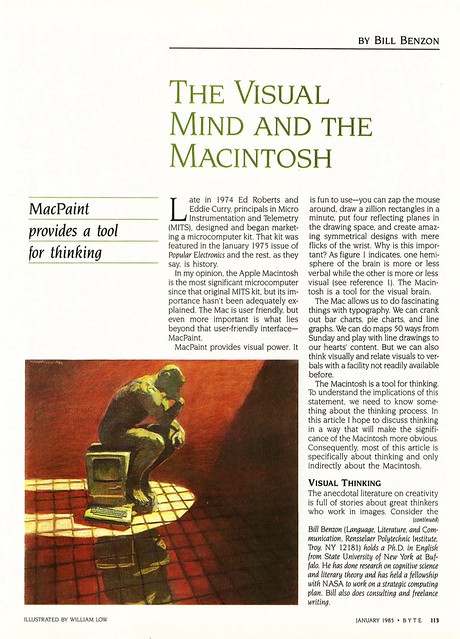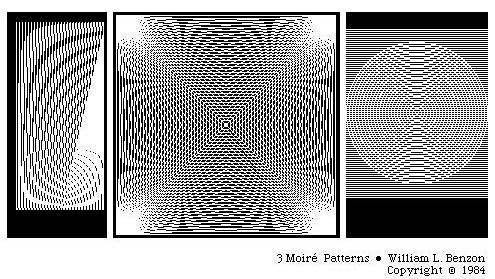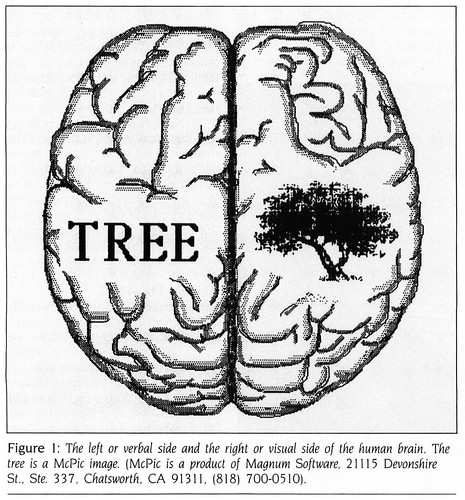Sometime in 1984 my friend Rich sent me a letter he had written on someone’s Macintosh computer. I forget what it said, and that doesn’t matter. What matters is that it had graphics and text on the same page from the same machine. I was blown away.
I immediately forked out, I believe, $4400 for one of those original Macs, I may even have gotten one of the first 100,000. That 4K got me a Mac, an external floppy drive, a dot matrix printer, and a carrying case. I took me awhile to get used to the mouse, but I loved it. And I loved making images.
Meanwhile I’d been reading reviews that said, nice box, not enough oomph for the $$, MacPaint’s nice, but so what? Those blockheads obviously didn’t get it. So I wrote a longish letter to Byte Magazine, then perhaps the premier magazine for personal computing, in which I said those guys were wrong because, Visual Thinking.
The good folks at Byte loved the letter, but said it was too long to print as a letter and not long enough for an article. I proposed to 1) edit it down to letter size and 2) to expand it to an article. They accepted my proposal. The article included a bunch of images I prepared on my Mac and was entitled “The Visual Mind and the Macintosh” and appeared in Vol. 10, No. 1, January 1985, pp. 113-130. Here’s the first page:
And here’s one of the images:
Alas, the rest of the images are lost to me as a result of changes in the operating system. I don’t even know if I’ve got them kicking around somewhere on my hard drive. Of course, they originally lived on a 3 1/4 inch floppy disk, but I transferred most/all of those to my hard drive when I got one sometime in the 1990s. But then Apple switched to Intel chips and I lost access to a bunch of files.
No matter. You can download a nice clean PDF of the article from Academia.edu:
The good folks at the Internet Archive have placed a complete run of Byte online, which they introduce as follows:
Byte magazine was a microcomputer magazine, influential in the late 1970s and throughout the 1980s because of its wide-ranging editorial coverage. Whereas many magazines from the mid-1980s had been dedicated to the MS-DOS (PC) platform or the Mac, mostly from a business or home user's perspective, Byte covered developments in the entire field of “small computers and software”, and sometimes other computing fields such as supercomputers and high-reliability computing. Coverage was in-depth with much technical detail, rather than user-oriented.
Yes. There’s nothing like it today.
As for my article, it does what the title says. The first three paragraphs:
Late in 1974 Ed Roberts and Eddie Curry, principals in Micro Instrumentation and Telemetry (MITS), designed and began marketing a microcmputer kit. That kit was featured in the January 1975 issue of Popular Electronics and the rest, as they say, is historyIn my opinion, the Apple Macintosh is the most significant microcomputer since the original MITS kit, but its importance hasn’t been adequately explained. The Mac is user friendly, but even more important is what lies beyond that user-friendly interface–MacPaint.MacPaint provides visual power. It is fun to use–you can zap the mouse around, draw a zillion rectangles in a minute, put four reflecting planes in the drawing space, and create amazing symmetrical designs with mere flicks of the wrist. Why is this important? As figure 1 indicates, one hemisphere of brain is more or less verbal while the other is more or less visual (see reference 1). The Macintosh is a tool for the visual brain.
And here’s figure 1, as published. I drew the brain myself, but I used clipart for the tree (credited in the caption).
As the title of the post indicates, the article was pretty much a manifesto for visualization. To be sure, I didn’t cover data visualization (couldn’t do much number crunching on a 128K Mac), but that was well in hand with folks like John Tukey and Edward Tufte.
I immediately imagined a revolution, as I am accustomed to do, a revolution in which people routinely wrote pieces that mixed the visual and the verbal on one page, a revolution in graphic design, a revolution in the way we think, fercrissake! Didn’t happen. There was some flurries here and there. Google “Zen and the Art of the Macintosh” and see what you get. Look at the images, perhaps even pick up a copy of the book. But it was a one-off.
One reason so may of my digital humanities colleagues are so excited about visualization is because it is so new...to them. It wouldn’t be new in 2017 if people had gotten the message back in 1984, when the Mac came out.
We’re still stuck in the muck and mire of an overall 19th century (Western) cultural framework.
But that’s an argument for another day.
More later.



No comments:
Post a Comment